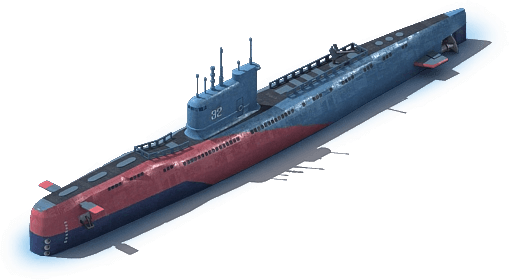
This image has format transparent PNG with resolution 509x280.
You can download this image in best resolution from this page and use it for design and web design.
Submarine PNG with transparent background you can download for free, just click on download button.
A submarine (or simply sub) is a watercraft capable of independent operation underwater. It differs from a submersible, which has more limited underwater capability. The term most commonly refers to a large, crewed vessel. It is also sometimes used historically or colloquially to refer to remotely operated vehicles and robots, as well as medium-sized or smaller vessels, such as the midget submarine and the wet sub. The noun submarine evolved as a shortened form of submarine boat; by naval tradition, submarines are usually referred to as "boats" rather than as "ships", regardless of their size (boat is usually reserved for seagoing vessels of relatively small size).
Although experimental submarines had been built before, submarine design took off during the 19th century, and they were adopted by several navies. Submarines were first widely used during World War I (1914–1918), and now figure in many navies large and small. Military uses include attacking enemy surface ships (merchant and military), attacking other submarines, aircraft carrier protection, blockade running, ballistic missile submarines as part of a nuclear strike force, reconnaissance, conventional land attack (for example using a cruise missile), and covert insertion of special forces. Civilian uses for submarines include marine science, salvage, exploration and facility inspection and maintenance. Submarines can also be modified to perform more specialized functions such as search-and-rescue missions or undersea cable repair. Submarines are also used in tourism, and for undersea archaeology.
Most large submarines consist of a cylindrical body with hemispherical (or conical) ends and a vertical structure, usually located amidships, which houses communications and sensing devices as well as periscopes. In modern submarines, this structure is the "sail" in American usage, and "fin" in European usage. A "conning tower" was a feature of earlier designs: a separate pressure hull above the main body of the boat that allowed the use of shorter periscopes. There is a propeller (or pump jet) at the rear, and various hydrodynamic control fins. Smaller, deep-diving and specialty submarines may deviate significantly from this traditional layout. Submarines use diving planes and also change the amount of water and air in ballast tanks to change buoyancy for submerging and surfacing.
Submarines have one of the widest ranges of types and capabilities of any vessel. They range from small autonomous examples and one- or two-person vessels that operate for a few hours, to vessels that can remain submerged for six months—such as the Russian Typhoon class, the biggest submarines ever built. Submarines can work at greater depths than are survivable or practical for human divers. Modern deep-diving submarines derive from the bathyscaphe, which in turn evolved from the diving bell.
In this page you can download free PNG images: Submarine PNG images free download